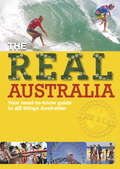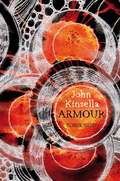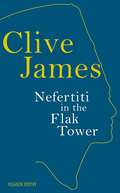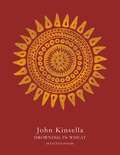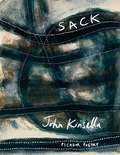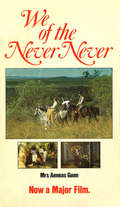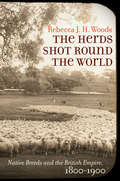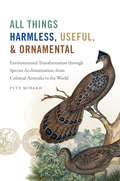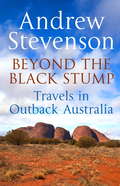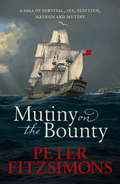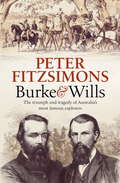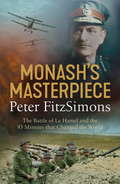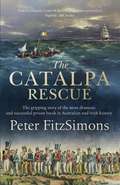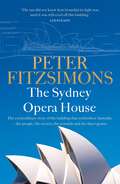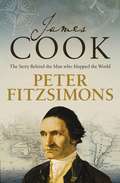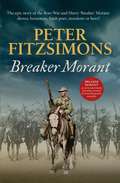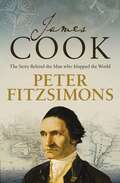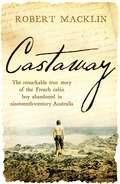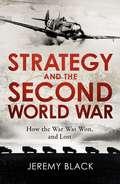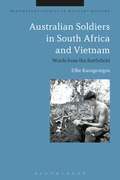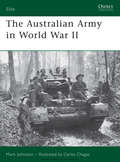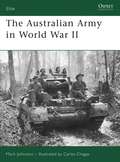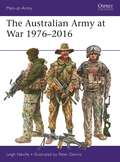- Table View
- List View
Australia (The Real #7)
by Kim O'donnellIs there somewhere you really want to travel to, or just yearn to know better?Do you want all the essential facts about Australia at your fingertips?If you want to know what it's really about (rather than the things your parents think you should see!), The Real Australia is a great place to start.• What's hot: Australia highlights you really won't want to miss• Get a taste for Australia's amazing food scene, from beach barbecues to top chefs• Tantalising accounts of the best sights• Maps and photos that put you into the action• The best of Australian food, music, festivals and sport• Key information for travellers to AustraliaWhether you are planning a trip or a holiday, just day-dreaming about one or simply need to know the facts, The Real Australia is your essential guide.
Armour
by John KinsellaWith Armour, the great Australian poet John Kinsella has written his most spiritual work to date – and his most politically engaged. The world in which these poems unfold is strangely poised between the material and the immaterial, and everything which enters it – kestrel and fox, moth and almond – does so illuminated by its own vivid presence: the impression is less a poet honouring his subjects than uncannily inhabiting them. Elsewhere we find a poetry of lyric protest, as Kinsella scrutinizes the equivocal place of the human within this natural landscape, both as tenant and self-appointed steward. Armour is a beautifully various work, one of sharp ecological and social critique – but also one of meticulous invocation and quiet astonishment, whose atmosphere will haunt the reader long after they close the book. Praise for John Kinsella: ‘Kinsella’s poems are a very rare feat: they are narratives of feeling. Vivid sight – of landscapes, of animals, of human forms in distant light – becomes insight. There is, often, the shock of the new. But somehow awaited, even familiar. Which is the homecoming of a true poet’ George Steiner
Nefertiti in the Flak Tower: Poems
by Clive JamesClive James’ power as a poet has increased year by year, and there has been no stronger evidence for this than Nefertiti in the Flak Tower. Here, his polymathic learning and technical virtuosity are worn more lightly than ever; the effect is merely to produce a deep sense of trust into which the reader gratefully sinks, knowing they are in the presence of a master. The most obvious token of that mastery is the book’s breathtaking range of theme: there are moving elegies, a meditation on the later Yeats, a Hollywood Iliad, odes to rare orchids, wartime typewriters and sharks – as well as a poem on the fate of Queen Nefertiti in Nazi Germany. But despite the dizzying variety, James’ poetic intention becomes increasingly clear: what marks this collection out is his intensified concentration on the individual poem as self-contained universe. Poetry is a practice he compares (in ‘Numismatics’) to striking new coin; and Nefertiti in the Flak Tower is a treasure-chest of one-off marvels, with each poem a twin-sided, perfect human balance of the unashamedly joyous and the deadly serious, ‘whose play of light pays tribute to the dark’.
Drowning in Wheat: Selected Poems
by John KinsellaDrowning in Wheat collects the best of three decades of John Kinsella's astonishing poetry in one volume. Kinsella is universally acknowledged as one of the greatest living Australian poets, and arguably the most important 'eco-poet' of the age; however, this collection also reveals a writer of unexpected and remarkable versatility, and one fluent in an almost bewildering range of forms, registers and voices. Despite its great thematic range, Kinsella's overarching project emerges all the more clearly: Drowning in Wheat is a clarion call and a call to order, a plea to listen to the earth - and to understand our own place within it while we still can. It is also an ideal introduction to one of the essential poets of the age.
Sack
by John KinsellaIn John Kinsella's new collection, 'Sack' not only refers not only to the shocking title poem, where a tied, writhing sack is seen flung from a car into gully - but also to the sacking and exploitation of the landscape and those who labour on it. Kinsella draws vividly on 'childhood memories' - but reveals them for the hard truths they are, by subtracting the cushioning effects of nostalgia. Kinsella shows how childhood prefigures our adult experience, and how its residues (here, those also take the literal form of asbestos and radiation) influence and shape our futures. Elsewhere, Kinsella resurrects an old form to do new work: the 'penillion' is an old Welsh stanza whose concision and insistent musicality provide the ideal means to encapsulate and concentrate Kinsella's vision of the land, animal life, and our sometimes fraught relationship with both. These short poems reveal astonishing and unsuspected correlations between music and form, place and language - and will come as a delightful surprise to those who know Kinsella primarily as a freewheeling long-form poet. But throughout Sack, the articulate urgency of Kinsella's lyric builds to nothing so much as a call to action, and underlines John Kinsella's reputation as one of the greatest Australian poets of the last fifty years.
We Of The Never Never (Classic Ser.)
by Aeneas GunnNewly married, Jeannie Gunn accompanies her husband to 'The Elsey', the huge cattle station in the Northern Territory, several hundred miles from the nearest town. She is one of the few white women in the area and her presence is at first resented by the stockmen until her warmth and spirit win their affection and respect. This is one of the few autobiographies written by a woman to chronicle the life of the pioneers of the outback. In the style of the bush storyteller, Mrs Gunn conveys with moving simplicity the beauty and cruelty of the land, and the isolation and loneliness, comradeship and kindness of the early settlers.
The Herds Shot Round the World: Native Breeds and the British Empire, 1800–1900 (Flows, Migrations, and Exchanges)
by Rebecca J. WoodsAs Britain industrialized in the early nineteenth century, animal breeders faced the need to convert livestock into products while maintaining the distinctive character of their breeds. Thus they transformed cattle and sheep adapted to regional environments into bulky, quick-fattening beasts. Exploring the environmental and economic ramifications of imperial expansion on colonial environments and production practices, Rebecca J. H. Woods traces how global physiological and ecological diversity eroded under the technological, economic, and cultural system that grew up around the production of livestock by the British Empire. Attending to the relationship between type and place and what it means to call a particular breed of livestock "native," Woods highlights the inherent tension between consumer expectations in the metropole and the ecological reality at the periphery.Based on extensive archival work in the United Kingdom, New Zealand, and Australia, this study illuminates the connections between the biological consequences and the politics of imperialism. In tracing both the national origins and imperial expansion of British breeds, Woods uncovers the processes that laid the foundation for our livestock industry today.
All Things Harmless, Useful, and Ornamental: Environmental Transformation through Species Acclimatization, from Colonial Australia to the World (Flows, Migrations, and Exchanges)
by Pete MinardSpecies acclimatization--the organized introduction of organisms to a new region--is much maligned in the present day. However, colonization depended on moving people, plants, and animals from place to place, and in centuries past, scientists, landowners, and philanthropists formed acclimatization societies to study local species and conditions, form networks of supporters, and exchange supposedly useful local and exotic organisms across the globe. Pete Minard tells the story of this movement, arguing that the colonies, not the imperial centers, led the movement for species acclimatization. Far from attempting to re-create London or Paris, settlers sought to combine plants and animals to correct earlier environmental damage and to populate forests, farms, and streams to make them healthier and more productive. By focusing particularly on the Australian colony of Victoria, Minard reveals a global network of would-be acclimatizers, from Britain and France to Russia and the United States. Although the movement was short-lived, the long reach of nineteenth-century acclimatization societies continues to be felt today, from choked waterways to the uncontrollable expansion of European pests in former colonies.
Beyond the Black Stump: Travels around Australia
by Andrew StevensonA seasoned traveller, travel writer Andrew Stevenson is unafraid of the unconventional. Whilst most people visiting Australia tread the well worn path from the Sydney Opera House to Cairns up the East Coast, Andrew disappeared into the Australian outback in search of the original Australians - the Aboriginal People."If you want to meet them nowadays, you've got to go beyond the black stump!" He was told. Going where few have gone before, Andrew delves into the Outback without fear. Drinking in bars with people even the locals avoid, asking questions that we all want to hear the answers to.Written with humour and compassion his powers of observation and enquiring mind draw out a frankness that is sometimes shocking but something from which we can all learn. Beyond the Black Stump: Travels around Australia is no ordinary tale of an intrepid traveller, it is an extraordinary account of an Australia that we have not seen before.
Mutiny on the Bounty: A saga of sex, sedition, mayhem and mutiny, and survival against extraordinary odds
by Peter FitzSimonsThe mutiny on HMS Bounty, in the South Pacific on 28 April 1789, is one of history's great epics - and in the hands of Peter FitzSimons it comes to life as never before.Commissioned by the Royal Navy to collect breadfruit plants from Tahiti and take them to the West Indies, the Bounty's crew found themselves in a tropical paradise. Five months later, they did not want to leave. Under the leadership of Fletcher Christian most of the crew mutinied soon after sailing from Tahiti, setting Captain William Bligh and 18 loyal crewmen adrift in a small open boat. In one of history's great feats of seamanship, Bligh navigated this tiny vessel for 3618 nautical miles to Timor.Fletcher Christian and the mutineers sailed back to Tahiti, where most remained and were later tried for mutiny. But Christian, along with eight fellow mutineers and some Tahitian men and women, sailed off into the unknown, eventually discovering the isolated Pitcairn Island - at the time not even marked on British maps - and settling there.This astonishing story is historical adventure at its very best, encompassing the mutiny, Bligh's monumental achievement in navigating to safety, and Fletcher Christian and the mutineers' own epic journey from the sensual paradise of Tahiti to the outpost of Pitcairn Island. The mutineers' descendants live on Pitcairn to this day, amid swirling stories and rumours of past sexual transgressions and present-day repercussions. Mutiny on the Bounty is a sprawling, dramatic tale of intrigue, bravery and sheer boldness, told with the accuracy of historical detail and total command of story that are Peter FitzSimons' trademarks.
Burke and Wills: The Triumph and Tragedy of Australia's Most Famous Explorers
by Peter FitzSimons'They have left here today!' he calls to the others. When King puts his hand down above the ashes of the fire, it is to find it still hot. There is even a tiny flame flickering from the end of one log. They must have left just hours ago.'MELBOURNE, 20 AUGUST 1860. In an ambitious quest to be the first Europeans to cross the harsh Australian continent, the Victorian Exploring Expedition sets off, farewelled by 15,000 cheering well-wishers. Led by Robert O'Hara Burke, a brave man totally lacking in the bush skills necessary for his task; surveyor and meteorologist William Wills; and 17 others, the expedition took 20 tons of equipment carried on six wagons, 23 horses and 26camels.Almost immediately plagued by disputes and sackings, the expeditioners battled the extremes of the Australian landscape and weather: its deserts, the boggy mangrove swamps of the Gulf, the searing heat and flooding rains. Food ran short and, unable to live off the land, the men nevertheless mostly spurned the offers of help from the local Indigenous people.In desperation, leaving the rest of the party at the expedition's depot on Coopers Creek, Burke, Wills and John King made a dash for the Gulf in December 1860. Bad luck and bad management would see them miss by just hours a rendezvous back at Coopers Creek, leaving them stranded in the wilderness with practically no supplies. Only King survived to tell the tale.Yet, despite their tragic fates, the names of Burke and Wills have become synonymous with perseverance and bravery in the face of overwhelming odds. They live on in Australia's history - and their story remains immediate and compelling.
Monash's Masterpiece: The battle of Le Hamel and the 93 minutes that changed the world
by Peter FitzSimonsThe Battle of Le Hamel on 4 July 1918 was an Allied triumph, and strategically very important in the closing stages of WW1. A largely Australian force commanded by the brilliant John Monash, fought what has described as the first modern battle - where infantry, tanks, artillery and planes operated together, as a coordinated force.Monash planned every detail meticulously - with nothing left to chance: integrated use of planes, wireless (and even carrier pigeons!)was the basis, and it went on from there, down to the details.Infantry, artillery, tanks and planes worked together of the battlefront, with relatively few losses. In the words of Monash: 'A perfect modern battle plan is like nothing so much as a score for an orchestral composition, where the various arms and units are the instruments, and the tasks they perform are their respective musical phrases.'
The Catalpa Rescue: The gripping story of the most dramatic and successful prison story in Australian and Irish history
by Peter FitzSimonsThe incredible true story of one of the most extraordinary and inspirational prison breaks in Australian history.New York, 1874. Members of the Clan-na-Gael - agitators for Irish freedom from the English yoke - hatch a daring plan to free six Irish political prisoners from the most remote prison in the British Empire, Fremantle Prison in Western Australia. Under the guise of a whale hunt, Captain Anthony sets sail on the Catalpa to rescue the men from the stone walls of this hell on Earth known to the inmates as a 'living tomb'. What follows is one of history's most stirring sagas that splices Irish, American, British and Australian history together in its climactic moment.For Ireland, who had suffered English occupation for 700 years, a successful escape was an inspirational call to arms. For America, it was a chance to slap back at Britain for their support of the South in the Civil War; for England, a humiliation. And for a young Australia, still not sure if it was Great Britain in the South Seas or worthy of being an independent country in its own right, it was proof that Great Britain was not unbeatable.Told with FitzSimons' trademark combination of arresting history and storytelling verve, The Catalpa Rescue is a tale of courage and cunning, the fight for independence and the triumph of good men, against all odds.
The Sydney Opera House
by Peter FitzSimonsIf only these walls and this land could talk . . . The Sydney Opera House is a breathtaking building, recognised around the world as a symbol of modern Australia. Along with the Taj Mahal and other World Heritage sites, it is celebrated for its architectural grandeur and the daring and innovation of its design. It showcases the incomparable talents involved in its conception, construction and performance history. But this stunning house on Bennelong Point also holds many secrets and scandals. In his gripping biography, Peter FitzSimons marvels at how this magnificent building came to be, details its enthralling history and reveals the dramatic stories and hidden secrets about the people whose lives have been affected, both negatively and positively, by its presence. He shares how a conservative 1950s state government had the incredible vision and courage to embark on this nation-defining structure; how an architect from Denmark and construction workers from Australia and abroad invented new techniques to bring it to completion; how ambition, betrayal, professional rivalry, sexual intrigue, murder, bullying and breakdowns are woven into its creation; and how it is now acknowledged as one of the wonders and masterpieces of human ingenuity.
James Cook: The story of the man who mapped the world
by Peter FitzSimonsCaptain James Cook is one of the most recognisable in Australian history - an almost mythic figure who is often discussed, celebrated, reviled and debated. But who was the real James Cook?The name Captain James Cook is one of the most recognisable in Australian history - an almost mythic figure who is often discussed, celebrated, reviled and debated.But who was the real James Cook?This Yorkshire farm boy would go on to become the foremost mariner, navigator and cartographer of his era, and to personally map a third of the globe. His great voyages of discovery were incredible feats of seamanship and navigation. Leading a crew of men into uncharted territories, Cook would face the best and worst of humanity as he took himself and his crew to the edge of the known world - and beyond.With his masterful storytelling talent, Peter FitzSimons brings James Cook to life. Focusing on his most iconic expedition, the voyage of the Endeavour, where Cook first set foot on Australian and New Zealand soil, FitzSimons contrasts Cook against another figure who looms large in Australasian history: Joseph Banks, the aristocratic botanist. As they left England, Banks, a rich, famous playboy, was everything that Cook was not. The voyage tested Cook's character and would help define his legacy.Now, 240 years after James Cook's death, FitzSimons reveals what kind of man James was at heart. His strengths, his weaknesses, his passions and pursuits, failures and successes.JAMES COOK reveals the man behind the myth.
Breaker Morant: The epic story of the Boer War and Harry 'Breaker' Morant: drover, horseman, bush poet, murderer or hero?
by Peter FitzSimonsThe epic story of the Boer War and Harry 'Breaker' Morant: drover, horseman, bush poet - murderer or hero?Most people have heard of the Boer War and of Harry 'Breaker' Morant, a figure who rivals Ned Kelly as an archetypal Australian folk hero. But Morant was a complicated man. Born in England and immigrating to Queensland in 1883, he established a reputation as a rider, polo player and poet who submitted ballads to The Bulletin and counted Banjo Paterson as a friend. Travelling on his wits and the goodwill of others, Morant was quick to act when appeals were made for horsemen to serve in the war in South Africa. He joined up, first with the South Australian Mounted Rifles and then with a South African irregular unit, the Bushveldt Carbineers.The adventure would not go as Breaker planned. In October 1901 Lieutenant Harry Morant and two other Australians, Lieutenants Peter Handcock and George Witton, were arrested for the murder of Boer prisoners. Morant and Handcock were court-martialled and executed in February 1902 as the Boer War was in its closing stages, but the debate over their convictions continues to this day.With his masterful command of story, Peter FitzSimons takes us to the harsh landscape of southern Africa and into the bloody action of war against an unpredictable force using modern commando tactics. The truths FitzSimons uncovers about 'the Breaker' and the part he played in the Boer War are astonishing - and finally we will know if the Breaker was a hero, a cad, a scapegoat or a criminal.
The Incredible Life of Hubert Wilkins: Australia's Greatest Explorer
by Peter FitzSimonsCaptain James Cook is one of the most recognisable in Australian history - an almost mythic figure who is often discussed, celebrated, reviled and debated. But who was the real James Cook?The name Captain James Cook is one of the most recognisable in Australian history - an almost mythic figure who is often discussed, celebrated, reviled and debated.But who was the real James Cook?This Yorkshire farm boy would go on to become the foremost mariner, navigator and cartographer of his era, and to personally map a third of the globe. His great voyages of discovery were incredible feats of seamanship and navigation. Leading a crew of men into uncharted territories, Cook would face the best and worst of humanity as he took himself and his crew to the edge of the known world - and beyond.With his masterful storytelling talent, Peter FitzSimons brings James Cook to life. Focusing on his most iconic expedition, the voyage of the Endeavour, where Cook first set foot on Australian and New Zealand soil, FitzSimons contrasts Cook against another figure who looms large in Australasian history: Joseph Banks, the aristocratic botanist. As they left England, Banks, a rich, famous playboy, was everything that Cook was not. The voyage tested Cook's character and would help define his legacy.Now, 240 years after James Cook's death, FitzSimons reveals what kind of man James was at heart. His strengths, his weaknesses, his passions and pursuits, failures and successes.JAMES COOK reveals the man behind the myth.
Castaway: The remarkable true story of the French cabin boy abandoned in nineteenth-century Australia
by Robert Macklin'A truly remarkable account drawing upon a version Pelletier gave when he eventually returned to his native France and also on anthropological studies of the Daintree people.' Piers Akerman, Daily Telegraph, Sydney 'An unforgettable tale of transformation and upheaval.'Stuart McLean, Daily Telegraph, SydneyA young boy abandoned in an alien landscape thousands of miles from home is adopted by local people and becomes one of them, welcomed into their community, marrying a wife and raising a child. After seventeen years, he is stolen back to his 'real' life, where he has another family, but dreams constantly of what he has left behind.This is the remarkable true story of a French cabin boy Narcisse Pelletier who, after disembarking from his ship the Saint-Paul with the rest of its crew in search of drinking water, found himself separated from his shipmates and in the end abandoned on the north coast of Queensland, Australia. Narcisse was adopted by an Aboriginal group who welcomed him as one of their own for seventeen years, during which time he had a family of his own. In 1875, though, he was kidnapped by the brig John Bell and was returned eventually to his family in Saint-Gilles, France, where he became a lighthouse keeper. Robert Macklin makes skilful use of Narcisse's own memoir Chez les sauvages along with new research to tell this extraordinary story.Robert is a Queenslander so knows the terrain and the people of the area in which Narcisse was left behind. Through Noel Pearson's Cape York Institute, he has arranged to meet descendants of the people who took the French cabin boy in and who know the stories of his time in Australia. Robert has also had access to a great deal of material on the early history of the Cape through the Australian National Library. He has drawn on the significant resources of the Australian Institute of Aboriginal and Torres Strait Islander Studies (AIATSIS) in Canberra on Aboriginal culture and history in Queensland and the Cape. In addition, he has made use of Narcisse Pelletier's own writings, including his account of his time in Australia, as well as several contemporaneous accounts of the Kennedy expedition to the area, including one from a member of the party. The author has made several trips to Cape York and one to Saint-Gilles and Saint-Nazaire in France.
Strategy and the Second World War: How the War was Won, and Lost
by Jeremy BlackA concise, accessible account of strategy and the Second World War. How the war was won . . . and lost..In 1941, the Second World War became global, when Nazi Germany attacked the Soviet Union; Japan attacked the United States at Pearl Harbor; and Germany declared war on the United States.In this timely book, which fills a real gap, Black engages with the strategic issues of the time - as they developed chronologically, and interacted - and relates these to subsequent debates about the choices made, revealing their continued political resonances.Beginning with Appeasement and the Soviet-German pact as key strategic means, Black examines the consequences of the fall of France for the strategies of all the powers. He shows how Allied strategy-making was more effective at the Anglo-American level than with the Soviet Union, not only for ideological and political reasons, but also because the Americans and British had a better grasp of the global dimension.He explores how German and Japanese strategies evolved as the war went badly for the Axis powers, and discusses the extent to which seeking to mould the post-war world informed Allied strategic choices from 1943 onwards, and the role these played in post-war politics, notably in the Cold War. Strategy was a crucial tool not only for conducting the war; it remains the key to understanding it today.
Australian Soldiers in South Africa and Vietnam: Words from the Battlefield (Bloomsbury Studies in Military History)
by Effie KarageorgosThe South African and Vietnam Wars provoked dramatically different reactions in Australians, from pro-British jingoism on the eve of Federation, to the anti-war protest movements of the 1960s. In contrast, the letters and diaries of Australian soldiers written while on the South African and Vietnam battlefields reveal that their reactions to the war they were fighting were surprisingly unlike those on the home fronts from which they came. Australian Soldiers in South Africa and Vietnam follows these combat men from enlistment to the war front and analyses their words alongside theories of soldiering to demonstrate the transformation of soldiers as a response to developments in military procedure, as well as changing civilian opinion. In this way, the book illustrates the strength of a soldier's link to their home front lives.
Australian Soldiers in South Africa and Vietnam: Words from the Battlefield (Bloomsbury Studies in Military History)
by Effie KarageorgosThe South African and Vietnam Wars provoked dramatically different reactions in Australians, from pro-British jingoism on the eve of Federation, to the anti-war protest movements of the 1960s. In contrast, the letters and diaries of Australian soldiers written while on the South African and Vietnam battlefields reveal that their reactions to the war they were fighting were surprisingly unlike those on the home fronts from which they came. Australian Soldiers in South Africa and Vietnam follows these combat men from enlistment to the war front and analyses their words alongside theories of soldiering to demonstrate the transformation of soldiers as a response to developments in military procedure, as well as changing civilian opinion. In this way, the book illustrates the strength of a soldier's link to their home front lives.
The Australian Army in World War II (Elite)
by Mark Johnston Carlos ChagasThis book recounts the organization and deployment of one of the most important fighting armies of World War II. Australian divisions made a large and distinctive contribution to victory both in the deserts of the Middle East and the jungles of the South-West Pacific,earning for the second time a unique reputation for aggressiveness, endurance and independence of spirit. The text is illustrated with original wartime photos from all fronts; and with full colour plates showing a wide range of uniforms and gear, together with the complex and colourful Australian system of unit insignia.
The Australian Army in World War II (Elite)
by Mark Johnston Carlos ChagasThis book recounts the organization and deployment of one of the most important fighting armies of World War II. Australian divisions made a large and distinctive contribution to victory both in the deserts of the Middle East and the jungles of the South-West Pacific,earning for the second time a unique reputation for aggressiveness, endurance and independence of spirit. The text is illustrated with original wartime photos from all fronts; and with full colour plates showing a wide range of uniforms and gear, together with the complex and colourful Australian system of unit insignia.
The Australian Army at War 1976–2016 (Men-at-Arms)
by Leigh NevilleSince the end of their involvement in the Vietnam War, the Australian Army has been modernized in every respect. After peacekeeping duties in South-East Asia, Africa and the Middle East in the 1980s–90s, 'Diggers' were sent to safeguard the newly independent East Timor from Indonesian harassment in 1999, and to provide long-term protection and mentoring since 2006. Australian Army units have served in the US-led wars in Iraq and Afghanistan, and Australian Special Forces are currently operating alongside US and British elements against ISIS in northern Iraq. During these campaigns the Australian SAS Regiment and Commandos have fully matured into 'Tier 1' assets, internationally recognized for their wide range of capabilities. The book, written by an Australian author who has written extensively about modern warfare, traces the development of the Army's organization, combat uniforms, load-bearing equipment, small arms and major weapon systems using specially commissioned artwork and photographs.
The Australian Army at War 1976–2016 (Men-at-Arms #526)
by Leigh NevilleSince the end of their involvement in the Vietnam War, the Australian Army has been modernized in every respect. After peacekeeping duties in South-East Asia, Africa and the Middle East in the 1980s–90s, 'Diggers' were sent to safeguard the newly independent East Timor from Indonesian harassment in 1999, and to provide long-term protection and mentoring since 2006. Australian Army units have served in the US-led wars in Iraq and Afghanistan, and Australian Special Forces are currently operating alongside US and British elements against ISIS in northern Iraq. During these campaigns the Australian SAS Regiment and Commandos have fully matured into 'Tier 1' assets, internationally recognized for their wide range of capabilities. The book, written by an Australian author who has written extensively about modern warfare, traces the development of the Army's organization, combat uniforms, load-bearing equipment, small arms and major weapon systems using specially commissioned artwork and photographs.
